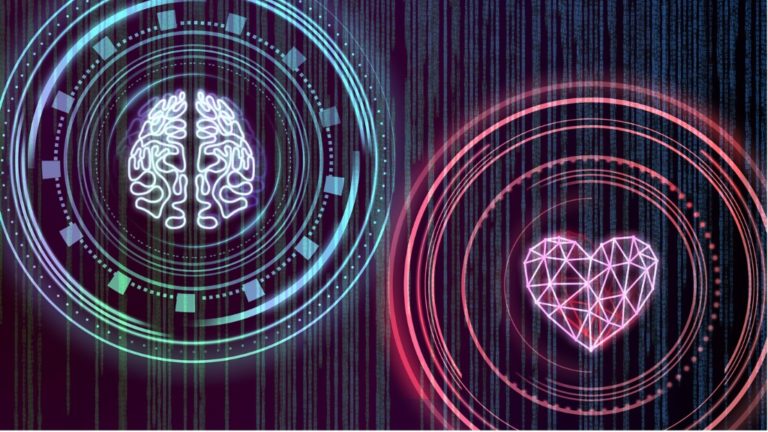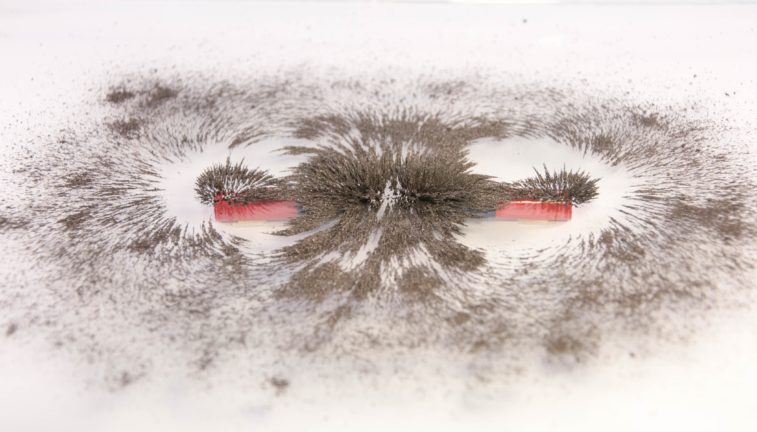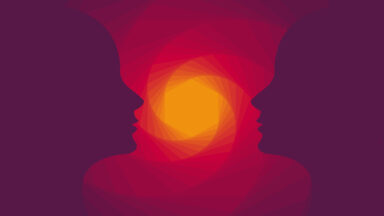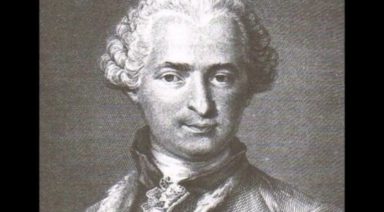Mysteries of the Human Heart

“The human heart has hidden treasures, in secret kept, in silence sealed.” — Charlotte Brontë
The human heart, the size of two adult fists, is mysterious, intelligent, powerful, and sometimes inexplicable. The Egyptians believed that Anubis, the god of the underworld and judge of the dead, weighed the hearts of the recently deceased against a feather — if the two balanced, the heart would be returned to owner. If the heart was heavier, it was weighted by bad deeds and fed to a monster.
Heart as Ruler of the Brain
Aristotle considered the heart as the center of reason, thought, and emotion, senior to the brain in importance. Ninth century Arabic philosopher Abu Nasr al-Farabi believed that, “The ruling organ in the human body is the heart; the brain is a secondary ruling organ subordinated to the heart.” Auguste Comte, a 19th century French philosopher declared that the brain should be servant to the heart.
“The most common denominator in all religions is that the heart is the seat of wisdom,” said Rollin McCraty Ph.d, director of research at the groundbreaking HeartMath Institute in Santa Cruz, CA. Twelfth century Christian mystic, Hildegard of Bingen, would agree. She wrote, “The soul sits at the center of the heart, as though in a house.”
The Heart-Brain Connection
If you can read this, your heart is beating at twice the pace of most animals — and humans have vascular disease, while our cousins the great apes do not. With its own electrical impulse, the human heart can continue to beat if taken from the body. Beating heart cells grown in Petri dishes synchronize with each other. The heart emits a signature electrical frequency thousands of times more powerful than anything else in the body.
Neurons, the brain cells responsible for processing sense-based input, send messages to the body, such as, “reach the hand to pick up a sandwich.” Neurons also transmit emotion. These specialized cells are found in the brain and nervous system, but importantly, also in the heart. Neurons can be harnessed to establish heart-brain coherence — In fact, heart neurons fire in conjunction with the brain neurons. The heart and brain are undisputedly, profoundly connected.
Originally trained as a geologist, Gregg Braden explores the intersection of science and spirituality from the perspective of a trained scientist. He speaks of the heart/brain union, saying, “Our brain receives many of its instructions on what to do from the heart. Studies show that the heart is able to think, feel, and have emotions on its own.”
Heartache vs. Happiness
Studies have shown that intense anger is damaging to the heart — intense grief as well. Statistically, we are 20 times more likely to have a heart attack after the death of a loved one.
Positive emotions like joy and contentment are accompanied by coherent heart rhythms. Happiness is good for the heart. We don’t think of the heart as being capable of producing hormones like the endocrine system, but oxytocin, called the “love” hormone, is manufactured in the heart.
The Heart’s Singular Intuition
For 25 years, researchers at the HeartMath Institute have innovated tools and methods designed to achieve measurable heart/brain coherence. HeartMath has focused on the psychophysiology of stress, emotions, and heart/brain interaction. Working within the parameters of the prevailing scientific model, these researchers have produced and published over 300 peer-reviewed or independent studies of the effectiveness of HeartMath techniques and technologies. Their research documents several types of beneficial outcomes from achieving heart/mind coherence.
Rollin McCraty Ph.D., one of the original founders of Heartmath, said, “The biggest hidden source of stress on the planet is the disorganization of heart/mind, causing lack of resonance. Lack of alignment eats the life force and happiness out of humanity.”
McCraty described intuition from the perspective of brain science, which identifies “ordinary,” “expert,” and “strategic” intuition. In his book “Strategic Intuition: The Creative Spark in Human Achievement,” William Duggan, wrote, “Ordinary intuition is a feeling, a gut instinct. Expert intuition is snap judgment when you instantly recognize something familiar, the way a tennis pro knows where the ball will go from the arc and speed of the opponent’s racket.
“The third kind, strategic intuition, is not a vague feeling, like ordinary intuition. Strategic intuition is a clear thought. And it’s not fast, like expert intuition. It’s slow. That flash of insight you had last night might solve a problem that’s been on your mind for a month.”
What Duggan calls “strategic” intuition, HeartMath researchers refer to as “non-local” intuition and have established that this type of insight, or “knowing,” is a function of the heart. Non-local intuition is the only type of intuition that involves the heart — the other two are derived from the brain’s experience and entrainment.

“We found that from the body perspective, the heart is the first to receive these non-local signals or intuitions, then they are passed to the brain. It’s a result I wouldn’t have predicted. The heart has access to information outside the boundaries of time and space. It’s been proven beyond a shadow of a doubt,” McCraty said.
But convincing the brain to accept what it may view as ” irrational” is the challenge addressed in the HeartMath model, where researchers explore ways to resolve the heart/mind split, or “incoherence.” The Western view asserts that the brain is senior to the heart — our cultural and educational focus is on the brain, which is habituated to believing it’s the boss. But making the shift is as easy as intentionally creating new neural pathways in the brain. “The human brain doesn’t like change. Shift to the heart to send messages to the brain,” said Gregg Braden.
Discussing coherence and healing, McCraty said, “Living systems have the capacity to self-heal. Multiple studies show heart self-regulation lowers blood pressure, improves hormonal balance, and gives better recovery from heart attacks. More coherence means more health. Coherence facilitates the body’s natural regenerative processes.”
Howard Martin, HeartMath Inc.’s Executive Vice President, said, “We have this magnificent intelligence that lifts us beyond our problems even in the midst of chaos and confusion. When the heart is put into practical application in daily life, we can experience a new fulfillment, a new life, beyond our greatest expectations.”
Martin described a HeartMath study in which subjects, wired to measure respiratory, heart, and other physiological functions sat in front of computers viewing random images — some beautiful, some potentially distressing. The image stream included a small time gap between pictures. Six seconds before an image displayed, test subjects’ physiology would react to what was coming, be it awful or wonderful. The conclusion drawn was that the heart’s “non-local” intuition anticipated imminent stress or pleasure a full six seconds before the actual experience.
The Heart’s Electromagnetic Field
McCraty explained that the earth’s geomagnetic field is a stationary, pure static magnetic field he likened to that of a refrigerator magnet. A magnet’s invisible electromagnetic fields are seen in iron filings that organize into patterns with lines that express the field. These line patterns are called “magnetic field lines. “These lines within a magnetic field literally act like guitar strings and have their own resonant frequency. Solar wind plucks the earth’s magnetic lines, causing vibration — field line resonance. The Earth’s primary resonance on a normal day is around 1 Hz, precisely the same as the coherent heart,” McCraty said.
He went on to say that human heart rhythms synchronize to the Earth’s resonant frequency to a level or degree no one ever thought possible. “Independent of time zones, we are all synchronizing to the Earth, and at HeartMath, we’re studying how it happens.”

Achieving Heart-Mind Resonance
Dozens of studies have documented the benefits of meditation. Researchers have observed lowered blood pressure, anxiety and depression relief, increased brain “gray matter,” and pain relief, to name a few. Meditation practices also achieve heart/brain coherence. “In meditation, different methods produce heart signatures — a loving-kindness meditation shows a different signature than say, a mindfulness meditation. Loving-kindness practices shift the heart into a different state, called coherence, a synchronized heart/brain neurology,” McCraty said.
HeartMath has developed practices and technologies to support heart/brain coherence, but McCraty shared some fundamental principles. “ The HeartMath tools, techniques and training process all have one thing in common — they operate in the present moment. The method is to 1. focus on the heart, 2. activate compassion, 3. and radiate that feeling too self and others.” This simple, deliberate method can relieve stress, anxiety, or depression, and lead to all the countless other benefits of heart coherence.
With persistent practice, exercise becomes a habit. Braden said, “There are four keywords for coherence: appreciation, gratitude, care, and compassion. When we practice moving into states aligned with one of these words, or some combination of the four, we create communication between the heart and the brain. This practice takes about three days to establish new neural network habit patterns supporting the heart/brain connection and communication.”
This coherence is not only beneficial to us as individuals — it is possible to create coherence on larger scales than we might imagine. To learn more about what Martin and McCraty call “Global Coherence,” watch this interview with Martin and Regina Meredith on Gaia. To explore the science of the heart’s intelligence, watch this segment of the Gaia series Inspirations, with Lisa Garr.
How to Connect With the Divine Energy Your Higher Self Holds

Connecting with the Divine Energy within your Higher Self can be a transformative and enlightening experience. It can guide you toward a deeper understanding of your true nature and spiritual potential. To embark on this journey of self-discovery, you’ll need to do a couple of things that seem easy but might be harder than you think in practice. From finding a quiet and peaceful space to silencing your mind and communicating with the divine, it requires more than simple meditation. Divine Energy pervades all of existence. Embrace this connection with an open heart, and let it illuminate your path toward spiritual growth and self-awareness.
What is the Higher Self?
The Higher Self, also known as the Divine Self, is the Self that exists at an even higher level than the soul; it is in every human being ever born. It is the true self essence of the Universe that dwells in your being, the source of all light and life within you, and your true motivation for living. It is a belief held by Hindus and New Age thought alike.
The Divine Self is what powers you and makes you wonder. It is the spiritual journey of the soul light at your core that chose to be incarnate at this point in time. It’s ever-aware and has been thinking since you began existing in this lifetime, and since your birth in other lifetimes. The body and the physical realm, in which we dwell in our own life, are thought to be but a vehicle for the Higher Self.
Divine Energy and the Higher Self
Divine Energy is the sacred yet infinite force that connects everything in the universe and transcends the physical world. It is believed to provide life, consciousness, and creation with things like love and wisdom. The concept of the Higher Self is closely related and represents the purest essence within individuals that connects them to the Divine Energy. Aligning with the Higher Self allows one to access ancient wisdom and spiritual growth – leading to a deeper understanding of one’s purpose and a sense of oneness with all creation.
If you’ve ever experienced synchronicities, where coincidences that are too uncanny to be coincidental occur in your life, you may be in the process of connecting with your higher self.
In the same beliefs, the soul is closer to the personality and is an intermediary between the person and her Divine Self until such time as she is able to directly experience and realize the Divine Self as who she is.
How to Contact Your Higher Consciousness
If you’re interested in opening up to your Divine Self, the practice promises guidance, peace, harmony, and illuminating light through its higher knowledge. Believers also claim that you can more easily turn away from the distractions of the physical world, and restore yourself in the light, love, and power of this eternal Self, because it will reveal the illusions, desires, and attachments that keep you trapped in a lower vibration and on a lesser path, thus enabling you to find your higher path. You are also supposed to gain a greater ability to recognize limiting, disharmonious, and restricting energies and forms.




































